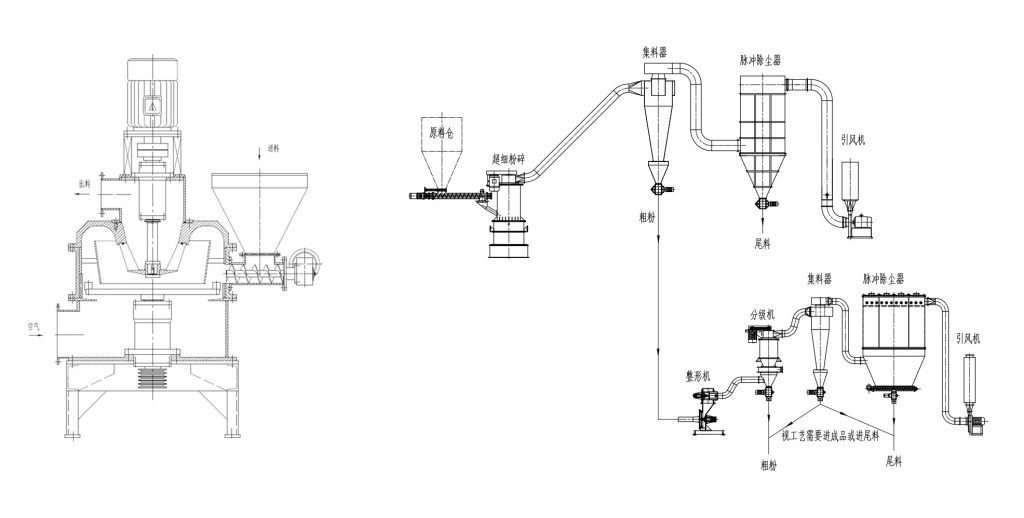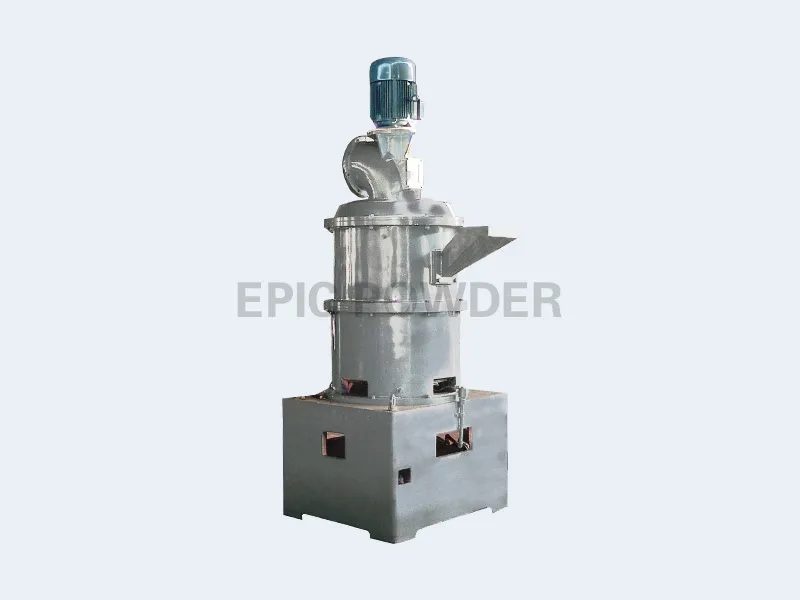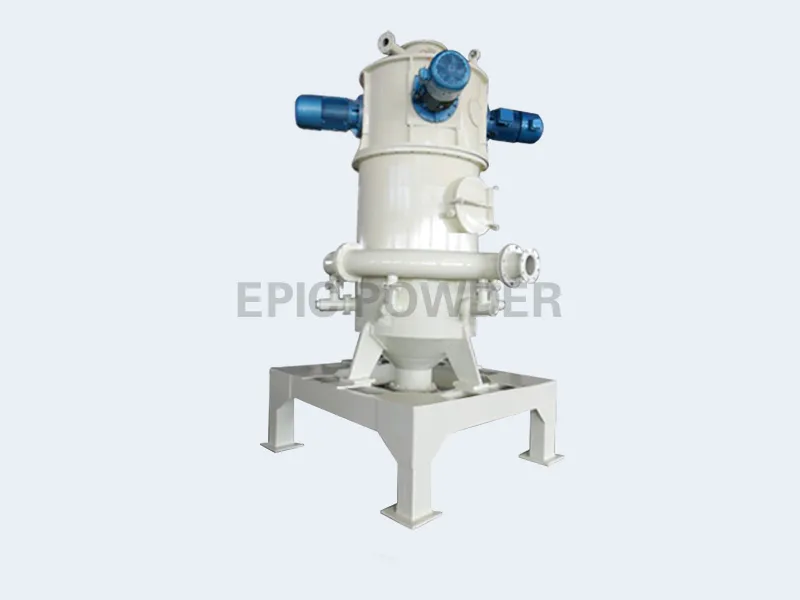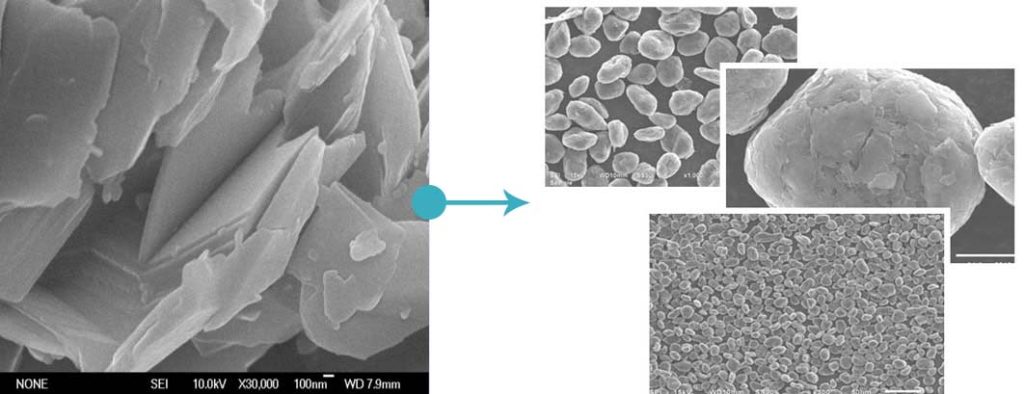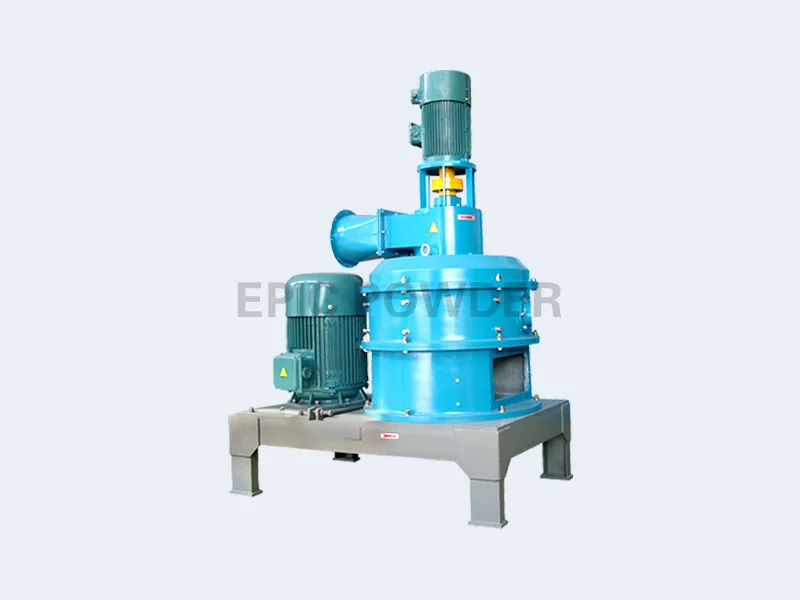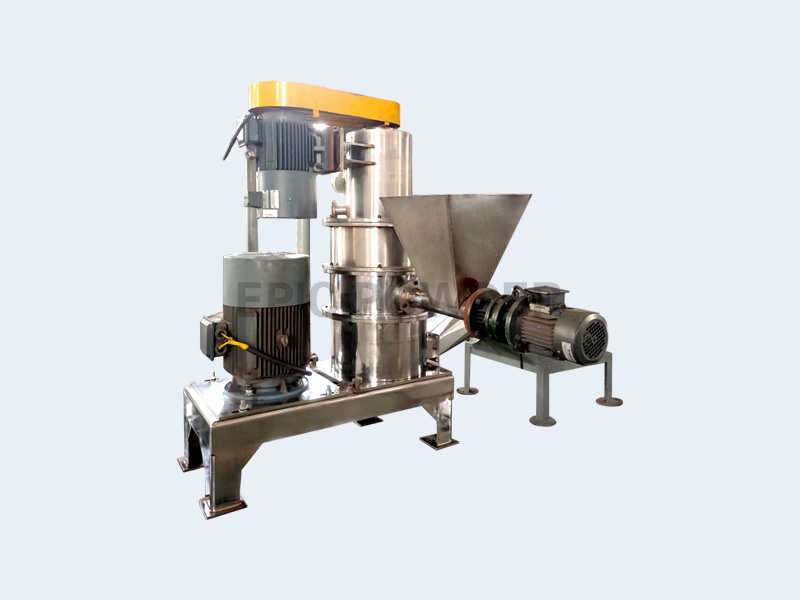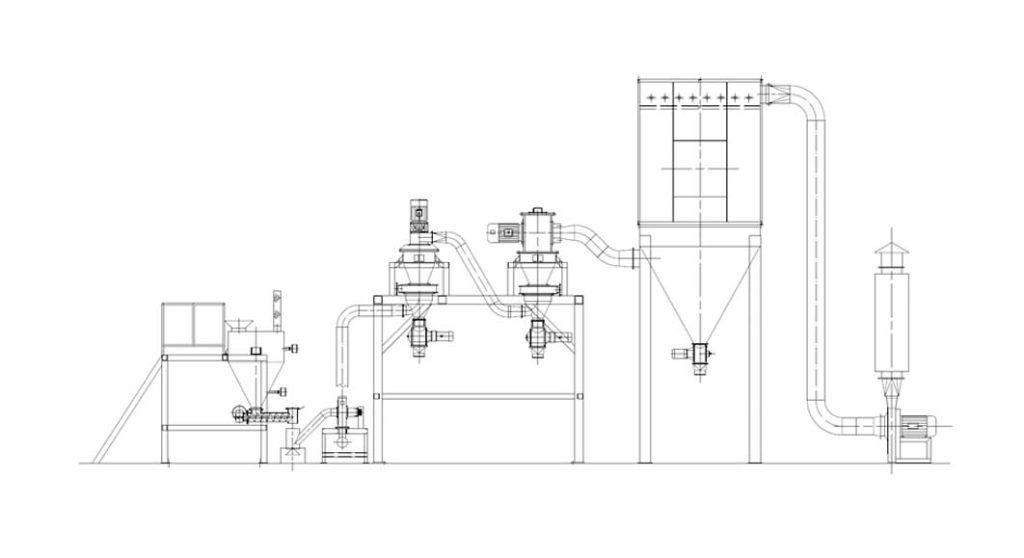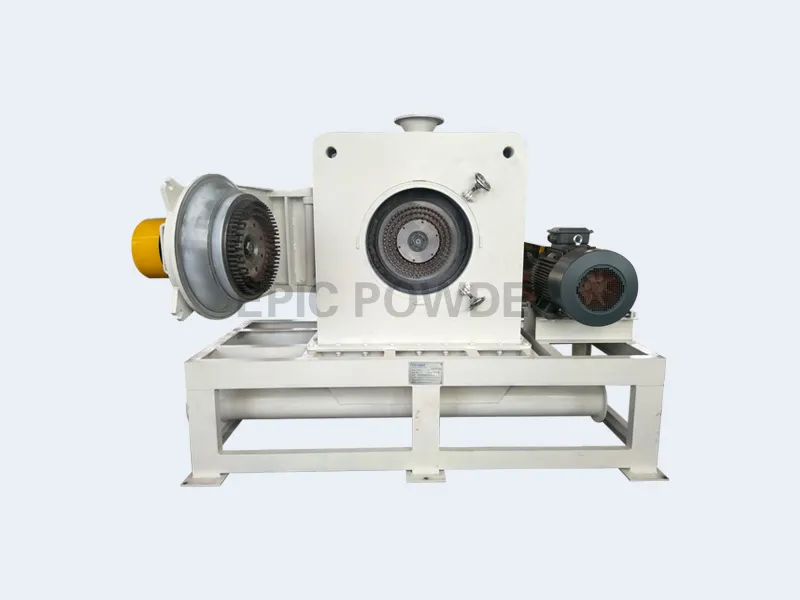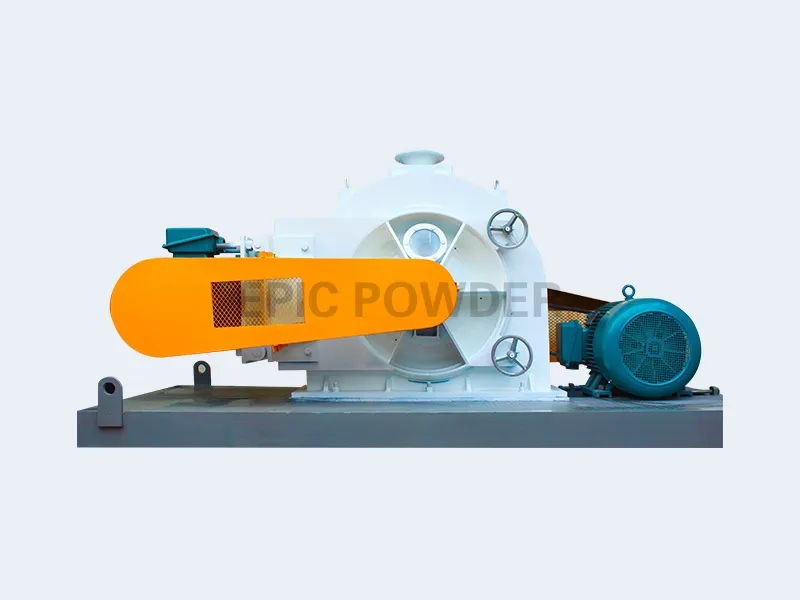Ultrafine grinding equipment with built-in grinder and classifier, the material is fed into the grinding disc to be collided repeatedly and milled by grinding hammers around the disc, then enters the classification area, through the centrifugal classification of the classifying wheel, fine powder is collected, coarse particles fall back to the grinding area to continue grinding and shaping.
The complete set of equipment is mainly composed of shaping machine, external classifier, cyclone collector, bag filter and draft fan, etc. After shaping, most of the finished product will be collected from the bottom outlet of classifier, and a small amount of micro powder will be collected by the bag filter. Draft fan provides necessary negative pressure for the whole system, and the system runs under negative pressure without dust flying.
The system has a three-way pipeline at the inlet of the classifier, which can be designed as the entrance into the shaping machine or directly into the classifier, depending on the process needs.
